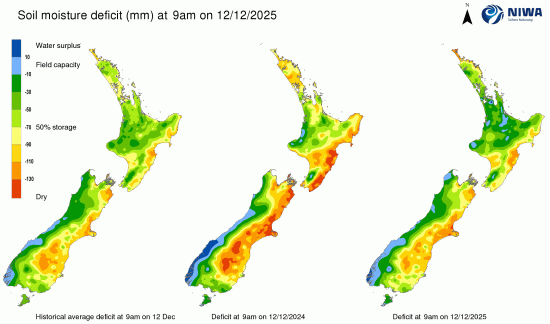
Here's our summary of key events overnight that affect New Zealand, with news the US corporate earnings season is in full swing. This week 488 companies reported Q3 results on Wall Street and on Monday another 368 will report on that day alone. These results have been middling so far.
Wall Street is ending its week marginally lower on the day but still the thick end of +1% up for the week. Shanghai ended yesterday decidedly weaker with a flourish never arriving. That means for the week it closed lower by -1.9%. Hong Kong was up +0.7% for the week despite a -0.5% fall on Friday. Tokyo is the Asia star, up +3.4% for the week post-typhoon. The NZX50 rose +1.3% and the ASX200 rose +0.6% for the week despite both ending a bit weakly. European markets all ended they week on a downer.
American Q3 growth seems stuck at unusually low levels and the risks are all to the downside. Much of those poor prospects are the direct result of recent very poor public policy decisions. From growth at the end of 2016 at 3.4%, they are stuck thinking the current 1.8% is "great". They will probably need to lower their expectations from here unless major changes eventuate.
China's Q3 GDP growth downshifted to +6.0%, and below the expected +6.1%, itself lower than the Q2 rate of +6.2%. In an economy the size of China's, a 0.1% miss is still a lot and takes it to a 30 year low. But interestingly, the main depressor was in their factory sector. Retail sales rose pretty much on target at +8.2% and unchanged from Q2 (and better than analysts expected). They reported higher industrial production, but lower fixed asset formation.
One sector still growing strongly is the food and beverage sector, which now accounts for NZ$1 tln in annual revenues, up impressively even if the recent food price rises are discounted.
And staying in China, a second province has decided to ban all peer-to-peer lenders, concluding that the risks to consumers are too high and the efforts to regulate them too costly.
The US has now imposed a 25% tariff on US$7.5 bln of selected EU goods after the World Trade Organisation ruled in its favour earlier this month on the issue of subsidies for Airbus. The EU says it will retaliate at the same level.
In Europe, global dairy company Danone has downgraded its revenue forecasts for 2019. But its baby formula sales in China were a bright spot, they say.
In the EU, the London Parliament will debate and vote of the EU-Johnson Brexit deal at about 3am tomorrow morning NZ time. The outcome is likely to be a close-run thing with the Government's own MPs fracturing and re-coalescing. A loss by the UK Government in this vote will likely result in an extension. Most observers expect a very close 'win' for the deal - but that would be the first vote in their parliament that this prime minister has ever won, a unique event.
In Australia, the RBA is fretting over its ability to be effective with monetary policy, unable to get inflation up to a sensible level, and unsure why interest rate cuts are losing their impact as a monetary policy tool.
We noted the US live GDP tracker above; well New Zealand has one too, Massey's GDP Live. That indicates that Q3 2019 growth ran at +2.4% and that it is as likely to pick up in Q4. Their Q3 indicative is above the RBNZ assumption of +2.3% and the same at the actual Q2 growth rate. The big bank economists are less optimistic.
The UST 10yr yield has held its overnight level of 1.75%, and is -2 bps lower that this time last week. Their 2-10 curve is positive at +17 bps. Their negative 1-5 curve is narrower for the week at just -2 bps. Their 3m-10yr curve has almost disappeared at -1 bps. The Aussie Govt 10yr is down at 1.13%, an overnight rise of +2 bps and a weekly rise of +4 bps. The China Govt 10yr is now at 3.20%, a +2 bps rise overnight and a +4 bps rise for the week. The NZ Govt 10 yr is now at 1.24%, unchanged overnight but up +6 bps for the week.
Gold is down -US$3 overnight to US$1,491/oz.
The VIX volatility index is just over 14, and lower than this time last week. Its average over the past year is 17. The Fear & Greed index we follow has moved back to be exactly on 'neutral'.
US oil prices are little-changed yet again just under US$53.50/bbl. The Brent benchmark is just under US$59.50. The US rig count which surprisingly rose last week, settled back this week but just to the level before it jumped.
The Kiwi dollar is firm against the greenback today, now at 63.7 USc and actually this is its highest level in more than five weeks. On the cross rates we are still at 93.1 AUc and a small dip overnight. Against the euro we have dipped as well to 57.1 euro cents. That puts the TWI-5 at just on 68.6 which is where it was at this time last week.
Bitcoin is now at US$7,922 and that is a fall of -5% for the week. The bitcoin rate is charted in the exchange rate set below.
The easiest place to stay up with event risk today is by following our Economic Calendar here ».
Daily exchange rates
Select chart tabs
3 Comments
The rotten heart of Europe
https://www.youtube.com/watch?v=a4DKKOlsJeE&feature=youtu.be
The long suffering Brexit voter: "...during crunch talks with Labour to get Theresa’s May’s deal through, the party’s Brexit spokesman, Sir Keir Starmer, condemned a document we had just given him – even though it had been copied and pasted from his own proposals!"
https://www.dailymail.co.uk/news/article-7586057/Jeremy-Corbyn-behaved-…
In Australia, the RBA is fretting over its ability to be effective with monetary policy, unable to get inflation up to a sensible level, and unsure why interest rate cuts are losing their impact as a monetary policy tool.
Low and even negative rates don’t indicate an economic friendly financial environment, they prove the exact opposite as financial agents are betting directly against it. Therefore, when policymakers tell us, as they constantly do, that interest rates and other monetary policies must remain “accommodative” for an extended period even after nearly ten years already so, what they really mean is that they are merely following the economy down.
There is an increasing risk that the US economy has become trapped in a prolonged period of subdued growth that requires lower official rates than was previously expected, a leading Federal Reserve policymaker has warned.
Jerome Powell, a member of the Federal Reserve Board of Governors, said he was not in a hurry to lift rates, arguing for a “very gradual” path for any rises, while warning that the US outlook was still dogged by global risks.
This is easily proven false. Monetary policy followed the real economy lower with additional rounds of QE in the US, Europe, and Japan; now that the economy is down, they have no idea why it won’t get back up. In short, the global economy is not at risk for becoming “trapped in a prolonged period of subdued growth” since it has already been in that condition for years as marked and signaled by central banks thinking always backward. The economy slows, central banks respond but the economy doesn’t. Rinse; repeat. Monetary policy isn’t producing even monetary effects. Link
Thus, the decline of interest rates to zero corresponds with a monetary imbalance in favor of deflation, if at least an abundance of deflationary pressures. This is something that Milton Friedman also talked about, particularly in 1998 with regard to Japan. He called it the interest rate fallacy, meaning that low nominal interest rates signify "tight" money conditions, or what would be consistent with significant deflationary pressure. It is and remains a fallacy because economists like those at every central bank around the world have decided instead that low rates are only "stimulus."
To correct this view, Friedman pointed out the basic, non-trivial distinction between a liquidity effect and an income effect. Low rates can be stimulative in the short run (the liquidity effect), but over the long run their persistence means something far different. A yield curve is supposed to be upward sloping given the core time value of money and investing. That arises from opportunity cost, meaning the more plentiful the opportunities the greater the time value and the steeper the curve (the income effect). Yield and/or money curves (the eurodollar curve and even the history of the OIS curve) that collapse and remain that way unambiguously demonstrate that "stimulus" deserves only the quotation marks.


We welcome your comments below. If you are not already registered, please register to comment
Remember we welcome robust, respectful and insightful debate. We don't welcome abusive or defamatory comments and will de-register those repeatedly making such comments. Our current comment policy is here.